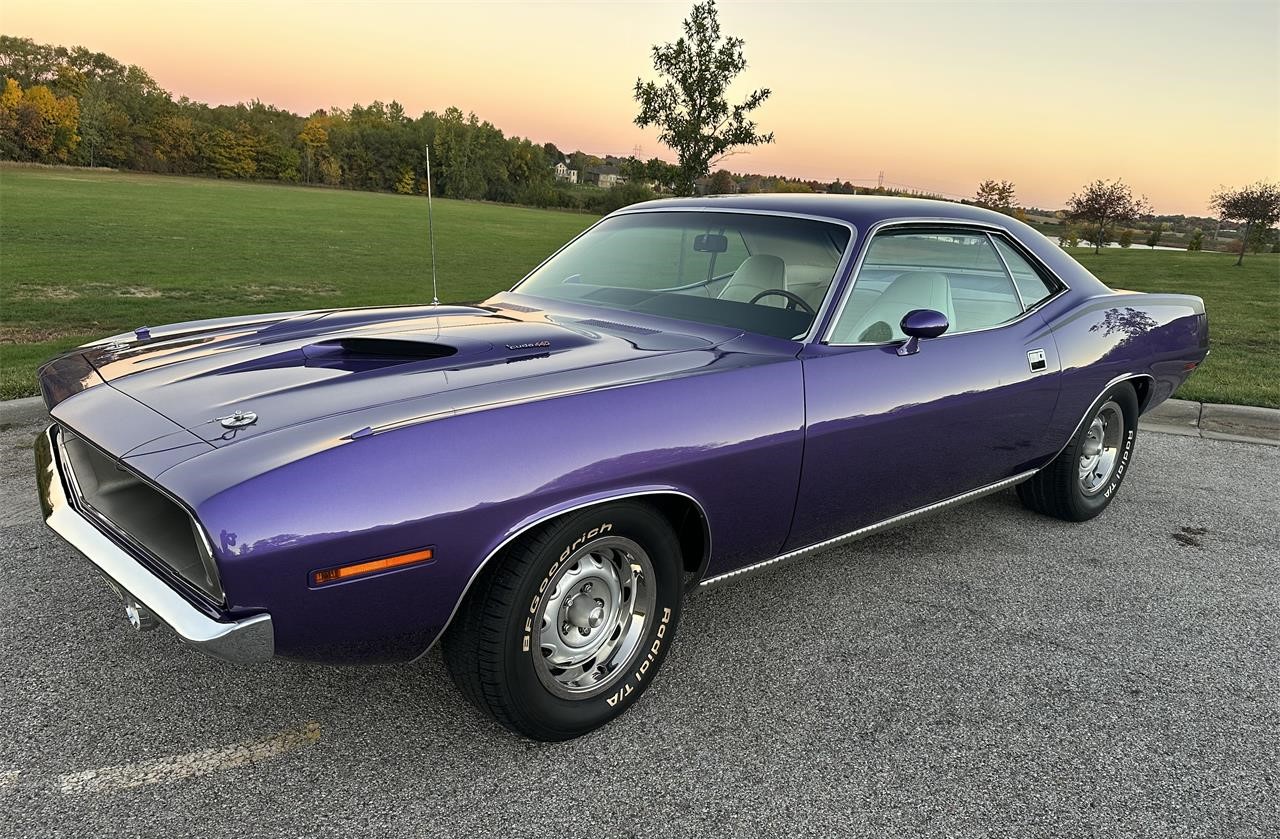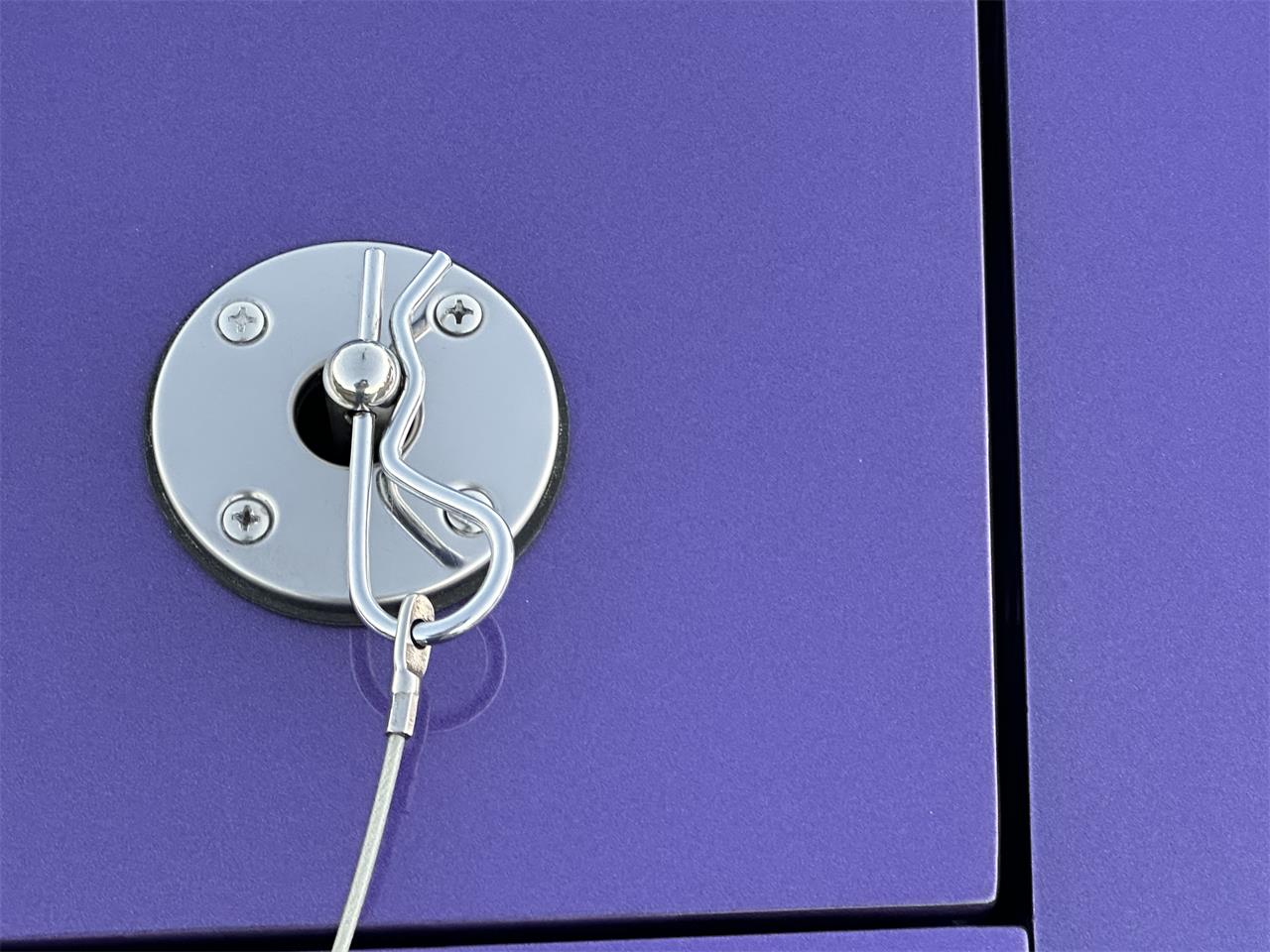The Plymouth Barracuda, to be honest, didn’t properly compete with the Ford Mustang until 1970 when the E-body platform was introduced. Before then, the Barracuda was a nice, sporty compact car that failed to seize on the charms gleaned...
The Plymouth Barracuda, to be honest, didn’t properly compete with the Ford Mustang until 1970 when the E-body platform was introduced. Before then, the Barracuda was a nice, sporty compact car that failed to seize on the charms gleaned from the Mustang. Our Pick of the Day, a 1970 Plymouth ‘Cuda, shows how Plymouth caught up and made its presence known with a vengeance. It’s for sale on ClassicCars.com by a private seller in Omaha. (Click the link to view the listing)

The Barracuda was introduced on April 1,, 1964, several weeks before the Mustang, but there’s a reason why we call them pony cars: the Mustang was a marketing tour de force, while the Barracuda was simply a fastback version of the Valiant. The Barracuda’s 1967 redesign sought to make the Barracuda compete toe-to-toe with the Mustang, complete with a fastback, coupe, and convertible. However, the proportions that made pony cars what they were, especially the long hood/short deck design, were not exploited by Plymouth. That would change after 1969.

The 1970 Barracuda was available as three models: base hardtop, performance-oriented ‘Cuda, and luxurious Gran Coupe. All three were available as hardtops and convertibles, plus the base car was available as a decontented coupe that lacked rear roll-down windows. Following the “Fuselage” design theme that started with Chrysler Corporation’s full-size vehicles, the Barracuda seemed like Plymouth took a glance at the 1967 Camaro and ran with it, exaggerating some proportions to make it its own. And, like other pony cars, Plymouth created an option list a mile long, giving consumers the opportunity to tailor-make a unique Barracuda.

Due to the use of the front subframe from the mid-size B-body, the new E-body Barracuda was able to handle every engine in Chrysler’s lineup, from the “Slant Six” to the 426 Hemi and 440. The non-performance models were available with all engines up to a 383, but the ‘Cuda started there and continued with the 340, 440 four-barrel, 440 six-barrel, and Hemi. Midyear, a Trans-Am version of the ‘Cuda called the AAR’Cuda was introduced, adding six-barrel carburetion to the 340.

This 1970 ‘Cuda is a fine example of Plymouth’s inaugural E-body. For one thing, it’s painted in “FC7” In Violet, a popular color better known as Plum Crazy over at Dodge. It’s powered by the 440 Super Commando (“U-code”) which was rated at 375 horsepower and was shared with Rapid Transit System stablemate, the GTX. What’s interesting about this engine is that it is rarer than the 390-horse 440 six-barrel. Another bit of trivia is that the 440 four-barrel was the highest-horsepower engine to be available with air conditioning, which this car has. Other features include 727 automatic transmission, white interior with black components, Rallye instrument cluster, three-speed wipers, and Light Package (fender-mounted turn signals, lights for the trunk, glove box, ashtray, and ignition switch time delay). Interestingly, this ‘Cuda was originally equipped with a white vinyl top and matching side protection molding, but they were left off during the rotisserie restoration; “Hockey Stick” stripes have been added in the molding’s place.

“Car is laser straight! Paint is in perfect condition with no chips or blemishes. Chrome and trim are all near perfect!” says the seller. For $129,000, it better be, right?
To view this listing on ClassicCars.com, see Pick of the Day.


